Heavy rainfall is characterized by high precipitation and intensity, posing a risk of flooding during driving.
Poor visibility can compromise one’s ability to drive safely, and therefore it’s essential to check the necessary weather updates, slow down, and consider using extra headlights to increase visibility. It is equally important to ensure that your windshield wipers and defroster are in good working order and can remove raindrops for an unobstructed view.
Heavy rain while driving can be overwhelming and nerve-wracking for any driver. But, driving in such conditions becomes necessary, especially when reaching a destination. Heavy rainfall can lead to reduced visibility, limited traction, flooded roadways, and hydroplaning.
But worry not, as we have covered you with our guide to safe driving in heavy rain. Our guide includes eight tips to help you navigate through heavy rainfall safely. We also cover what to do if you start hydroplaning and how to be cautious while driving in the rain. So, let’s get behind the wheel confidently and keep ourselves and others safe.
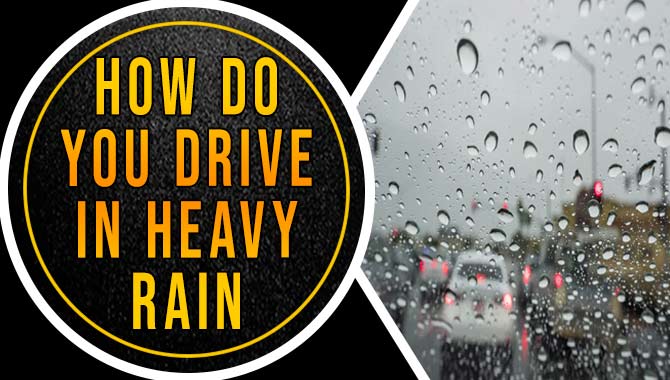
8 Tips For Driving In Heavy Rain
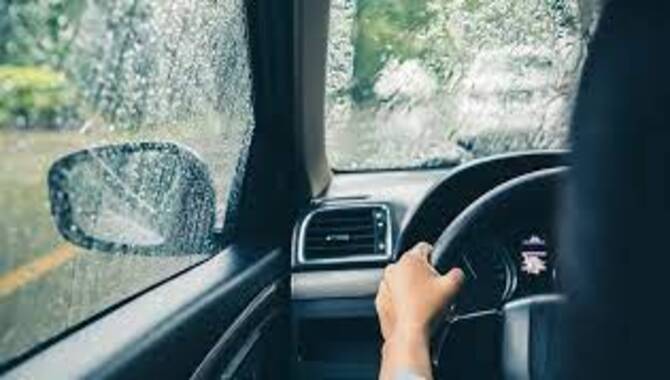
Driving in heavy rain can be daunting, even for the most experienced drivers. Here are eight tips to follow when driving in rainy conditions to prevent accidents: First and foremost, slow down and follow the three-second rule when driving in heavy rain.
Avoid potholes and standing water on the road as they have a high possibility of creating hydroplaning. Increase the three-second rule to 5-6 seconds and keep a safe distance from the car in front of you.
Check the functionality of windshield wipers, headlights, taillights, brake lights, and turn signals to avoid mishaps. It is essential to have good traction on wet roads, so check tire tread depth and inflation before heading out.
1. Slow Down
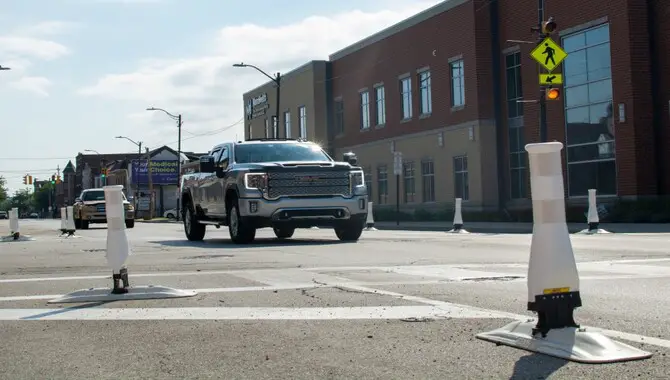
When driving in heavy rain, the most important thing to remember is to slow down. This will reduce your risk of hydroplaning and give you extra time to react to any unexpected obstacles on the road.
Slow down when driving in heavy rain. The water on the road can be icy and slippery, so paying attention and slowing down when the roads are wet is important. Slowing down will allow you to see and avoid obstacles more easily, reducing the risks of accidents and other issues.
It’s also a good idea to leave plenty of space between yourself and other vehicles, as the water could look like a solid object in your vision because of the reduced visibility.
Using your hazard lights or high beams when you slow down is also a good idea to make it easier for others to see you. Overall, slow down, pay attention, and correctly use your headlights and hazards to stay safe on the road during these weather conditions.
2. Turn Your Lights On
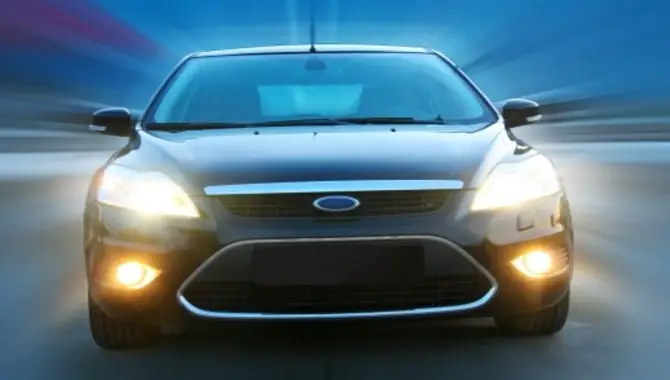
Turn your headlights on when driving in heavy rain, even during the daytime. This will increase your visibility to other drivers and help you see the road better. Ensure your taillights, brake lights and turn signals also work correctly. In heavy rain, it’s essential to see and be seen to avoid any accidents.
3. Avoid Hydroplaning
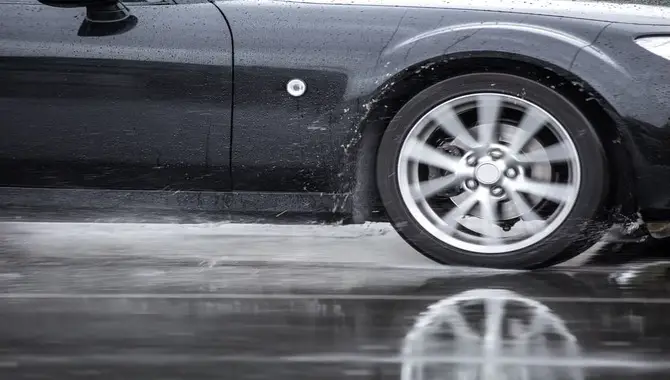
Hydroplaning is one of the biggest risks when driving in heavy rain. Avoid sudden or harsh movements while driving, such as hard braking or turning, to avoid hydroplaning. Maintain a steady speed and try to drive in the vehicle’s tracks ahead of you, as the water is usually less deep there.
If you do start to hydroplane, stay calm and gently steer in the direction you want to go. Avoid sudden movements, as this can cause your car to spin out of control. Remember to slow down and drive carefully to prevent hydroplaning in the first place.
4. Don’t Drive Through Standing Water
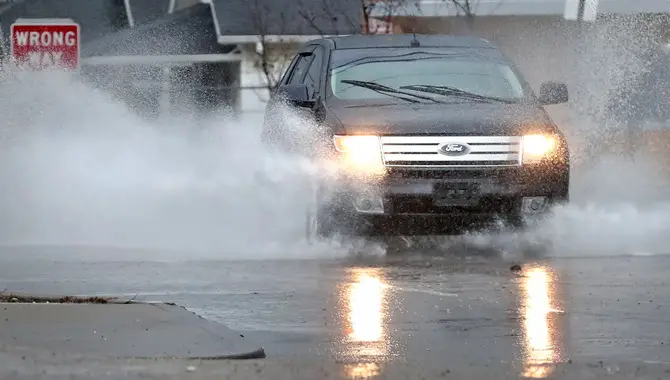
It’s important to never drive through standing water during heavy rain, as it can be deeper than it seems and cause your car to stall or even be swept away. If you come across standing water, turn around and find an alternate route. Safety should always be your top priority when driving in challenging weather conditions.
5.When In Doubt, Stay Off The Roads
When driving in heavy rain, slow down and drive with caution. Slow speed and visibility can be dangerous and unpredictable driving conditions. Avoiding flooded roads or standing water on them is also a good practice. Avoid driving in areas where you may lose traction or slide unexpectedly.
When in doubt, stay off the roads during heavy rain. If you can avoid driving, staying inside is best until the weather improves. If you must drive, follow the above tips and drive cautiously to ensure you and others stay safe.
6. Don’t Use Cruise Control In Heavy Rain
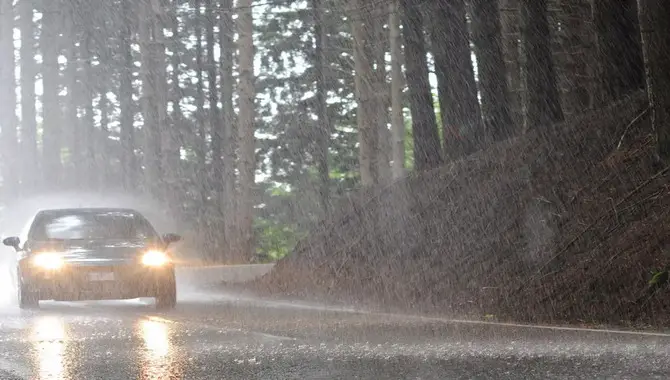
Driving in heavy rain can be challenging, but several tips can help keep you safe. One important tip is to avoid using cruise control in heavy rain. Cruise control can lead to hydroplaning, resulting in the loss of steering control.
If you do find yourself hydroplaning, let off the gas and steer the car straight or toward the skid until you regain contact with the road. It’s also important to avoid sudden braking on a wet road, which can cause the car to skid. In addition, it’s best to avoid flooded roads and roads with water crossing them during heavy rain.
7. Use Low Beams And Avoid Puddles

Driving in heavy rain can be quite challenging. Here are some tips to keep in mind:
- Slow down and drive with caution. Avoid driving in areas where you might lose traction.
- If possible, stay off the roads during heavy rain. If you must drive, choose an alternate route if necessary.
- Do not use cruise control in heavy rain, which can lead to hydroplaning.
- Use low beams and avoid puddles to maintain visibility on the road.
- Safety should always be your top priority.
8. Keep A Safe Distance
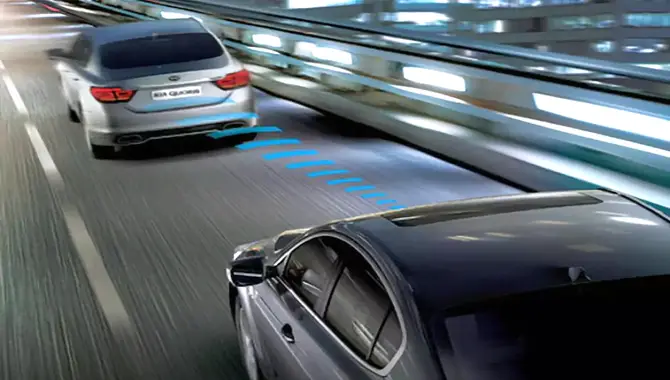
When driving in heavy rain, taking precautions is important to ensure your safety on the road. One of the most important tips for driving in heavy rain is maintaining a safe distance between cars. This means keeping a gap of at least four seconds between you and the car in front.
Avoid heavy braking, as this can increase the risk of hydroplaning, which occurs when the tires lose contact with the road surface. In addition, reducing your speed can help to provide greater stopping distances and keep you from skidding on wet roads. It’s also important not to drive through water across the road, as the current can cause your vehicle to become stuck or swept away. With these tips, you can stay safe and confident on the road, even when driving in heavy rain.
What To Do If You Start To Hydroplane
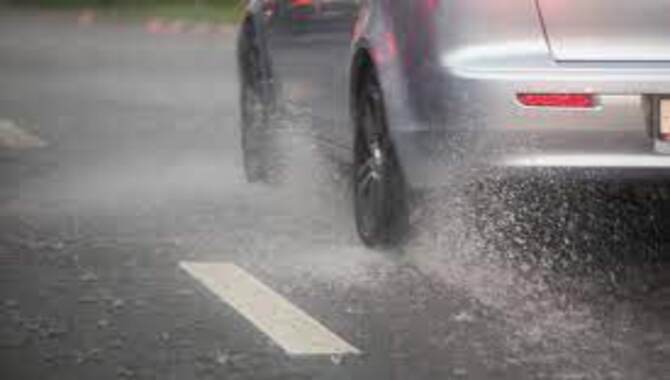
One of the most difficult hazards of driving in heavy rain is hydroplaning. Hydroplaning, where your vehicle loses traction on the road surface and begins to slide on a thin layer of water, can cause you to lose control of your car.
It can be a nerve-racking experience, but it’s essential to remain calm and follow some basic steps to regain control. If your car has a manual transmission, take your foot off the gas and press the clutch pedal to the floor. Do not attempt to brake, steer into or out of a skid or spin.
Slow down, turn off cruise control, and don’t panic. Look and steer in the direction you want your car to go. Gradually ease your foot off the gas until the vehicle feels stable.
If the rainfall is too heavy, don’t hesitate to pull over and park until it lightens. Following these steps, you can safely navigate one of the most dangerous aspects of driving in heavy rain.
Increase Visibility While Driving In Heavy Rain
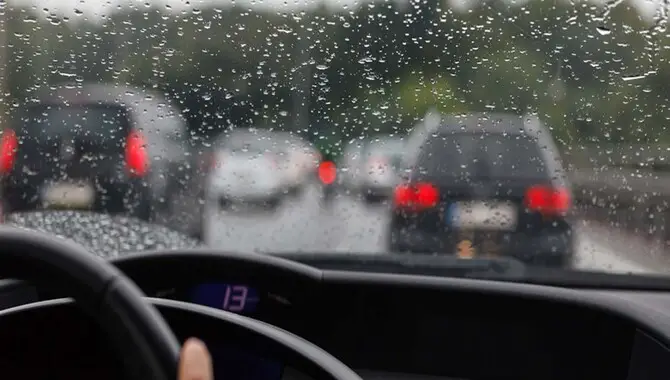
Use your headlights and windshield wipers to increase visibility while driving in heavy rain. Ensure your windshield wipers are in good condition, and replace them if they are streaking or not wiping properly. Use your headlights on low beams to increase visibility, and if necessary, turn on your hazard lights to warn other drivers of your presence.
Avoid using high beams, which can reflect off the rain and decrease visibility. By taking these steps, you can improve your visibility and reduce the risk of accidents while driving in heavy rain.
Watch Out For Hydroplaning When Driving In Heavy Rain
When driving in heavy rain, it is important to be aware of the risk of hydroplaning. Hydroplaning occurs when your vehicle tires lose contact with the road due to a layer of water on the road surface.
The risk of hydroplaning can be reduced by slowing down, turning off cruise control, and not panicking. If you feel your car start to hydroplane, ease your foot off the gas and steer in the direction the car needs to go.
It is also important to avoid hard braking and sharp turns as it can make the situation worse. If you cannot control the vehicle, pull over and park until the heavy rain has subsided. Awareness of hydroplaning risks and taking necessary precautions can help ensure a safe driving experience in heavy rain.
Tips For Driving In Heavy Rain
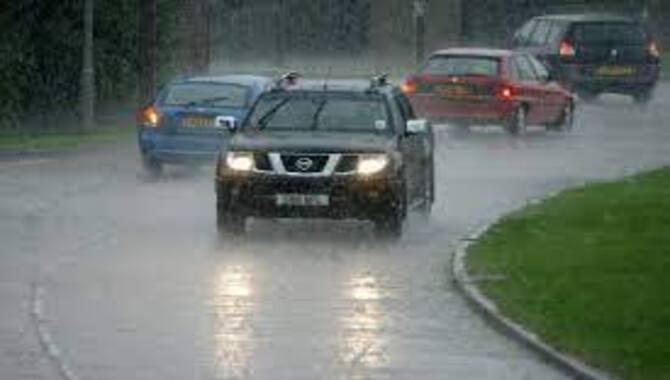
Driving in heavy rain can be a daunting task, but by following some simple tips, one can ensure safe driving. Slowing down is a crucial aspect of driving in heavy rain as it reduces the risk of accidents. Drivers should avoid potholes and not brake when they hit them.
It is essential to respect the three-second rule, which means maintaining a safe distance from the car ahead of you in case you need to stop abruptly. Before any trip in wet weather, inspecting your car’s windshield wipers, headlights, taillights, brake lights, and turn signals is vital.
Checking tire tread depth and inflation ensures enough traction on wet roadways. By following these tips, one can drive safely in heavy rain and avoid any accidents.
Conclusion
In conclusion, driving in heavy rain can be dangerous and requires extra caution and attention. Slow down, turn your lights on, maintain a safe distance, and avoid sudden braking or acceleration. If you start to hydroplane, resist the urge to panic; instead, steer toward the skid and ease off the gas until you regain control.
Always be mindful of your surroundings, keep your eyes on the road, and stay alert to potential hazards. With these tips, you can help ensure a safer and more enjoyable driving experience in even the heaviest of rainstorms.
Frequently Asked Questions
What Should You Do When Driving In Heavy Rain?
When driving in heavy rain, it is important to slow down and remain cautious. Increase the distance between you and other vehicles to allow extra stopping time and avoid sudden movements or lane changes. Use your headlights and turn signals to alert other drivers of your presence, and steer clear of any standing water or flooded areas.
How Do People Drive In Heavy Rain?
When driving in heavy rain, it is important to slow down and increase your following distance to allow for more reaction time. Turn on your headlights and use your windshield wipers to improve visibility. Avoid sudden movements or sharp turns, and stay in the middle of the road to avoid standing water and potential hydroplaning.
Can Cars Drive In Heavy Rain?
Yes, cars can drive in heavy rain, but it is important to take extra precautions for safety. This includes lowering your speed, increasing following distance, using headlights and windshield wipers, and avoiding sudden turns or lane changes.
Is There Any Reason I Shouldn’t Travel With My Family In Bad Weather Conditions?
Yes, there are several reasons why you shouldn’t travel with your family in bad weather conditions. Bad weather can make driving conditions dangerous, increasing the risk of accidents and injuries.
Can You Safely Use Your Car’s Headlights When It’s Raining Outside?
Using your car’s headlights when driving in heavy rain is generally safe and recommended. This can help improve your visibility and allow others to see your vehicle more clearly in the rain.

